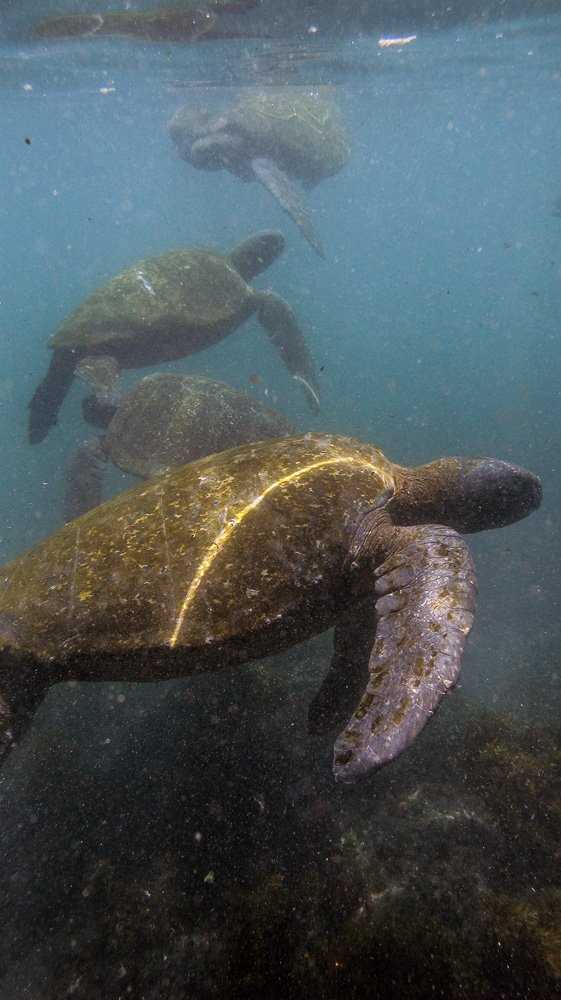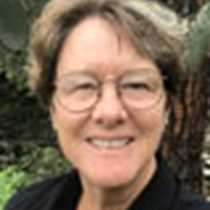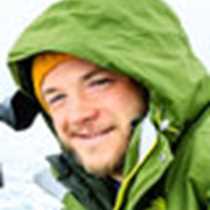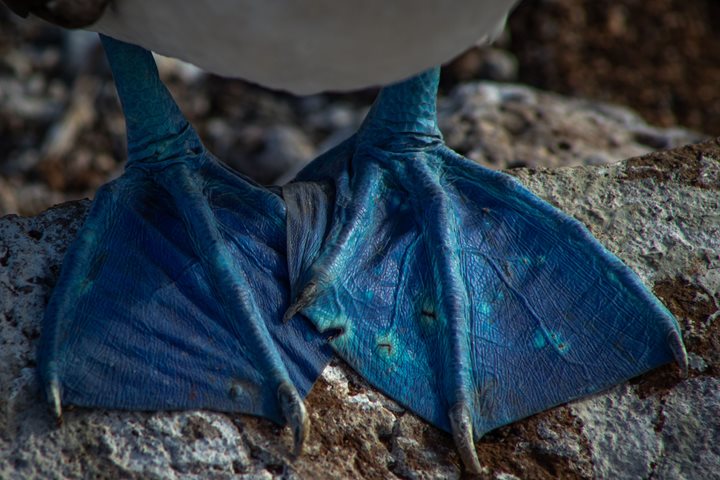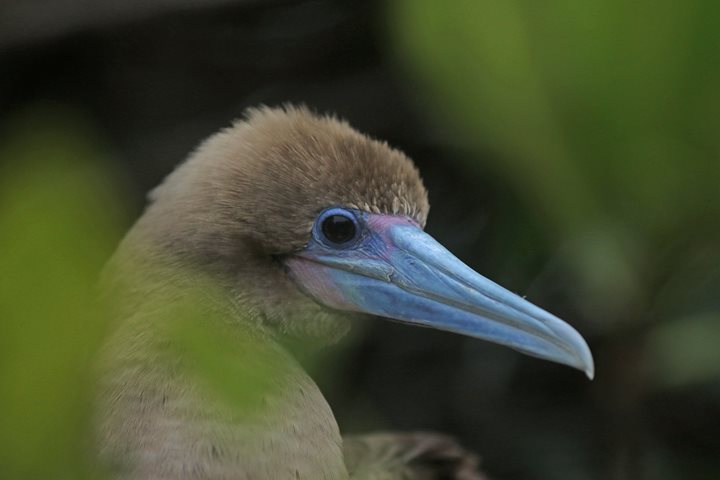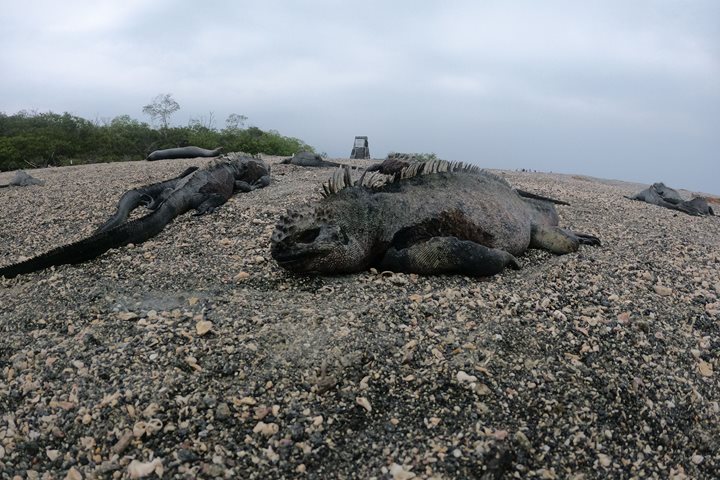Wow! This was an extraordinary day within an extraordinary expedition.
In the morning before breakfast, the National Geographic Islander was sailing along the northern coast of Isabela Island when someone caught a glimpse of the condensed cloud of a whale blow hanging in the still air. With time in our favor, the ship veered towards the area, and sure enough, three tropical whales were spotted over the next half-hour. In their company were many sea birds such as white-vented and wedge-rumped storm petrels, Galapagos shearwaters and brown noddy terns. Even smooth-tailed mobulas showed their presence with a few high leaps into the air.
Later during a Zodiac ride off the southern shore of Ecuador Volcano, we added blue-footed boobies, Nazca boobies, flightless cormorants, Galapagos fur seals, and green sea turtles to the list that was growing fast. And the day had just begun!
Despite the chilly-sounding temperature of 68° Fahrenheit (19° Celsius), quite a few decided to give snorkeling a try in the bay – and oh my gosh! The temperature was the least important item on our minds because we immediately had marine turtles around us, under us, next to us, nose-to-nose with us…like space ships in another dimension. They were serene ambassadors of another world, where time was not of the essence, but slower, with time to think clearly.
Suddenly a flightless cormorant appeared zipping around. It was searching for just the right piece of seaweed for its nest (to be accepted – or not - by the mate waiting on shore). Then a sea lion dashed by me, anxious to reach the folks snorkeling nearby because it finally had someone to play with…and proceeded to twirl a turtle and surprise the swimmers with some close calls and near misses (all carefully calculated on its part, of course). I got myself into a bit of surging water among boulders and was considering extracting myself when I saw a marine iguana had come out to graze! What a treat! So despite the “to-ing” and “fro-ing” I managed to capture a couple of photos of the only reptile in the world feeding on algae while gripping tightly with long claws to surge-pounded rocks.
Just as the Zodiacs approached the National Geographic Islander for boarding after this exhilarating snorkel, we got the message over the radios that Killer whales had been sighted! That changed all thoughts of abandoning the Zodiacs. Off we went! And for the next hour we followed a pod of six individuals; the matriarch and what seemed to be a couple of young males and females (her offspring), and even a much younger one, the baby of the family. After they had decided to pick up speed and leave us behind, we then found ourselves in the presence of the southern ocean sunfish, Mola ramsyi, large dorsal fins flopping from side to side. Despite their clumsy-looking shape and movements, they are anything but…and our intrepid Video Chronicler tried to get some underwater footage by jumping in, but to no avail. They easily out-maneuvered him! But my underwater camera had a bit more luck – and pure luck it was, by holding it underwater as it passed by the Zodiac.
After a late lunch, a light rest period, and a talk on oceanography, we were once more ready to go out, this time to go ashore on the island of Fernandina. Our youngest island, the one with the most potential for erupting, held her calm this afternoon and no eruption took place (bummer). But on land the marine iguanas were demonstrating behaviors indicative of the breeding season starting to rev up! A tad early I would have thought, but who am I to interpret what they have been doing successfully for millions of years? Big males looked imposing, females scattered when they approached with intent. Male sea lions were also showing interest in female sea lions who were nursing new-born pups. Within a month of giving birth, females come into estrus, so the presence of 1-week old pups showed the action was about to begin among sea lions as well. The flightless cormorants weren’t lagging behind either because several couples were forming and nests were appearing – the first clumps of seaweed being brought ashore by birds looking to impress their mates with their sincere and good intentions.
The grand finale was a spectacular sunset against a clear sky with the bar open on the top deck.
Fernandina Volcano, we are awaiting your next awakening with bated breath!

